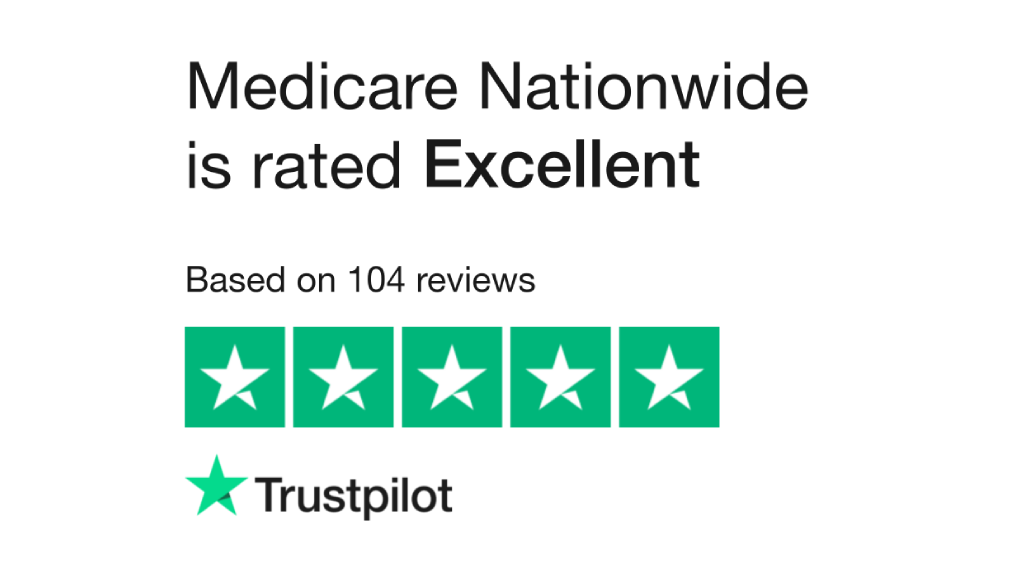The VBID (Value-Based Insurance Design) model, a program allowing certain Medicare Advantage (MA) plans to offer tailored benefits for chronically ill enrollees, will end in 2025, as announced by the Centers for Medicare & Medicaid Services (CMS). This change significantly impacts enrollees in Chronic Condition Special Needs Plans (C-SNPs), which serve beneficiaries with conditions like diabetes, heart failure, or end-stage renal disease (ESRD).
Approximately 1.2 million enrollees in VBID plans, including those in C-SNPs, may face changes to their benefits and costs in 2026. At Medicare Nationwide, we’re here to help you navigate these changes during the 2026 Annual Enrollment Period (AEP) (October 15–December 7, 2025). Here’s how the Value-Based Insurance Design termination affects C-SNP consumers, how to know if you’re in a VBID plan, and why consulting us is critical.

How to Know If You’re in a VBID Plan
The VBID model allowed participating MA plans, including some C-SNPs, to offer Special Supplemental Benefits for the Chronically Ill (SSBCI) (e.g., transportation, home-delivered meals, or home modifications), reduced cost-sharing for medications or services, and wellness incentives like gift cards. C-SNPs, designed for specific chronic conditions, were well-suited for Value-Based Insurance Design, but not all C-SNPs participated. In 2025, only 13 MA organizations offered VBID plans across 39 states, Puerto Rico, and Washington, D.C., covering about 1.2 million enrollees.
To confirm if your C-SNP is a Value-Based Insurance Design plan, follow these steps:
- Review Your Plan Documents: Check your 2025 Annual Notice of Change (ANOC) or Evidence of Coverage (EOC), mailed in the fall. Look for:
- Terms like “Value-Based Insurance Design” or “VBID.”
- SSBCI, such as transportation to dialysis, healthy food programs, or home safety modifications (e.g., grab bars).
- Reduced or zero copays for medications (e.g., insulin for diabetes) or specialist visits tied to your chronic condition.
- Wellness rewards (e.g., gift cards up to $600 annually for screenings or treatment adherence).
- C-SNP Clue: If your C-SNP emphasizes tailored benefits for your condition (e.g., diabetes-specific meal delivery or reduced copays for heart failure drugs), it may be a Value-Based Insurance Design plan.
- Identify Unique Benefits: If you receive benefits like free transportation, meal programs, or reduced costs for your chronic condition, your C-SNP may be part of a Value-Based Insurance Design. For example, a C-SNP enrollee with ESRD might receive transportation to dialysis through a Value-Based Insurance Design.
- Call Your Plan: Contact your plan’s customer service (number on your member ID card) and ask, “Is my C-SNP part of the Value-Based Insurance Design model?” Specify benefits you rely on, like reduced drug costs or meal delivery.
- Use Medicare.gov: Visit Medicare.gov’s Plan Finder, enter your plan details, and check for VBID features like SSBCI or reduced cost-sharing. Filter by “Special Needs Plans” to focus on C-SNPs.
- Consult Medicare Nationwide: Our licensed agents can verify if your C-SNP is a Value-Based Insurance Design plan and identify 2026 plans with similar benefits. Call us at 1-888-559-0103 or visit our website for a free consultation during AEP.
Why Is the VBID Model Ending?
CMS is terminating the Value-Based Insurance Design model after 2025 due to:
- High Costs: The model cost $2.3 billion in 2021 and $2.2 billion in 2022, with limited evidence of significant quality improvements or cost savings compared to non-VBID plans.
- Integration into MA Plans: Value-Based Insurance Design innovations, like SSBCI, are now permanent in MA plans, including C-SNPs, thanks to the Bipartisan Budget Act of 2018 and CMS rules. Plans can offer these benefits without VBID.
- Limited Participation: Only 13 organizations participated in 2025, making the model less scalable.
- Administrative Burden: Value-Based Insurance Design requires extensive oversight, which CMS aims to streamline.
While Value-Based Insurance Design (VBID) is ending, many benefits, like transportation or meal delivery, will remain available in other MA plans, including C-SNPs, but specifics vary by plan.
How Will VBID Termination Most Affect C-SNP Enrollees?
C-SNPs, tailored for chronic conditions, were a natural fit for Value-Based Insurance Design’s focus on chronically ill beneficiaries. The termination could significantly impact C-SNP enrollees in these ways:
1. Loss of Tailored SSBCI
VBID C-SNPs often provided SSBCI, like transportation to medical appointments, home-delivered meals, or home modifications, specific to conditions like diabetes or ESRD. In 2026, your C-SNP may not offer these benefits, or eligibility may be stricter (e.g., limited to certain conditions).
- Example: A diabetes C-SNP enrollee receiving Value-Based Insurance Design-funded meal delivery may lose this benefit if their 2026 plan lacks equivalent SSBCI.
- Action: Compare 2026 C-SNPs to ensure they offer SSBCI for your condition, such as meal programs or transportation.
2. Higher Out-of-Pocket Costs
VBID C-SNPs reduced copays or deductibles for medications (e.g., heart failure drugs) or specialist visits. Without Value-Based Insurance Design, your 2026 C-SNP may have higher cost-sharing, increasing costs for managing your condition.
- Example: An ESRD C-SNP enrollee with zero copays for dialysis medications under Value-Based Insurance Design may face new copays in 2026.
- Action: Review your 2026 ANOC for changes in copays, deductibles, or Part D drug costs. Seek C-SNPs with low cost-sharing for your medications.
3. Hospice Care Disruption
Some Value-Based Insurance Design C-SNPs tested integrated hospice benefits, allowing enrollees to stay in their plan for end-of-life care. After 2025, you may need to switch to Traditional Medicare for hospice, potentially disrupting care coordination.
- Example: A heart failure C-SNP enrollee in VBID hospice care may need to change providers under Traditional Medicare.
- Action: Confirm your 2026 C-SNP’s hospice coverage or explore Traditional Medicare options if nearing end-of-life care.
4. Plan or Network Changes
If your Value-Based Insurance Design C-SNP is discontinued, you may need to switch to a new C-SNP or MA plan, which could have a different provider network, affecting access to specialists for your condition.
- Example: A COPD C-SNP enrollee may lose access to their pulmonologist if their new plan’s network is narrower.
- Action: Verify that your doctors and specialists are in-network for any new C-SNP.
What Should C-SNP Consumers Pay Attention to Most?
To protect your coverage as a C-SNP enrollee, focus on these steps during the 2026 AEP:
1. Review 2026 Plan Changes
- Read your 2026 ANOC and EOC for changes in SSBCI, cost-sharing, or drug coverage. Note any Value-Based Insurance Design-specific benefits ending, like meal delivery or reduced copays.
- Use Medicare.gov’s Plan Finder to compare 2026 C-SNPs, prioritizing those offering SSBCI and low costs for your condition.
2. Assess Your Chronic Condition Needs
- Ensure your 2026 C-SNP covers your specific condition (e.g., diabetes, ESRD) with benefits like transportation, meal programs, or reduced drug costs. Confirm eligibility for SSBCI, as requirements vary.
- Evaluate your Part D drug needs, as cost-sharing changes could raise expenses.
3. Check Provider Networks
- Confirm that your specialists (e.g., endocrinologist for diabetes) and facilities (e.g., dialysis centers) are in-network for your 2026 C-SNP. Network changes are common post-VBID.
4. Explore All Options
- Compare C-SNPs, other MA plans, or Traditional Medicare with a Medigap policy. Traditional Medicare may suit those needing hospice or broader provider access, but C-SNPs often offer more tailored benefits.
- Check state programs for social services (e.g., transportation) to replace lost Value-Based Insurance Design benefits.
5. Act During AEP (October 15–December 7, 2025)
- Switch C-SNPs, enroll in a new MA plan, or return to Traditional Medicare during AEP. Changes take effect on January 1, 2026. Start early to avoid rushed decisions.
Why Consult with Medicare Nationwide?
The VBID model’s end could disrupt your C-SNP benefits, but MedicareNationwide can help. Our licensed agents specialize in Medicare Advantage and C-SNPs, offering:
- VBID Verification: We’ll confirm if your C-SNP is a Value-Based Insurance Design plan and explain how termination affects your benefits.
- 2026 Plan Comparisons: We’ll find C-SNPs or MA plans with SSBCI, low-cost-sharing, and in-network providers for your condition.
- Seamless Transitions: We’ll minimize disruptions to your care, ensuring access to transportation, meal programs, or reduced drug costs.
- Personalized Guidance: Whether you have diabetes, heart failure, or ESRD, we’ll tailor a plan to your health and budget.
Contact us today at 1-888-559-0103 or visit the Medicare Nationwide website for a free, no-obligation consultation. Let us guide you before the AEP deadline on December 7, 2025.

